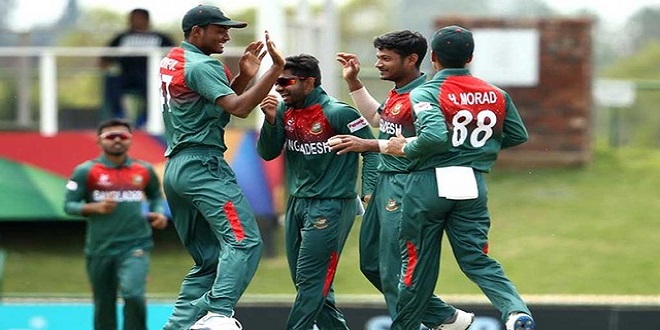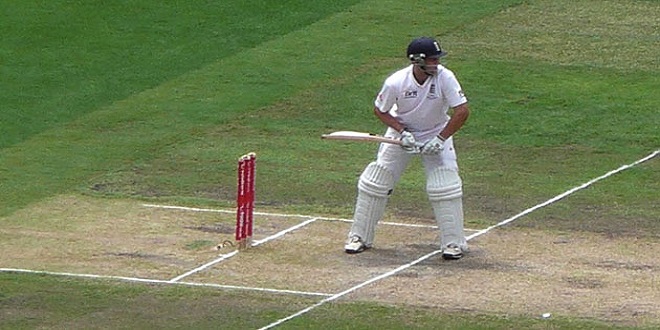Taking In the Joy of Cricket

Glancing at Cricket’s Global Appeal
Cricket has spread around the globe on the back of the British Empire. Despite the best efforts of cricket’s global administrators – the International Cricket Council (ICC) – cricket has never managed the trick of breaking out of this traditional heartland. For example, no Chinese cricket team exists and even the USA team actually consists mostly of expatriate West Indians living in Florida. But the British Empire – which at its height covered a third of the globe – isn’t a bad heartland for a sport. India, Pakistan, Australia, New Zealand, South Africa, West Indies, Zimbabwe, and Bangladesh all play test cricket. Doing a quick bit of maths, that area covers about 1.3 billion people – around a quarter of the world’s population. Although relatively small beer compared to soccer, this coverage dwarfs some other world sports such as rugby, hockey, and international tiddlywinks! And cricket isn’t a minority sport in the countries that play it: Far from it.
Gauging the Difference: Amateur and Professional Cricket
Cricket, like most major sports, is divided between the amateur and the professional game. The amateurs play for fun, the professionals play for pay. An estimated 300–400 professional cricketers earn their livings playing in Britain, whereas tens of thousands of amateur players play for fun each weekend during the summer months. Even more play the occasional game of cricket – perhaps they have their cricket bat and clothing stuffed under the stairs, getting everything out when asked to take part in a friendly match at work or the local village cricket club.
The cricket season runs from April to September in Britain. But because cricket is a global sport and other parts of the world have their summers at different times of the year, even when no cricket is being played in Britain – because the weather’s cold and wet – cricket is being played somewhere else in the world. For example, in Australia the cricket season runs from late October through to March
Understanding the great divide: Amateurs and professionals
Over time, the skill and fitness standards of professional cricketers have raced away from those of amateurs. A long time ago, when test match cricket had just started to be played, many top players were amateurs. Often they were members of the upper classes who didn’t have to work and had enough spare time on their hands to play cricket. However, back then a lot of sham amateurism went on with top players claiming to be amateur but receiving great big ‘expenses’ payments. See Chapter 17 for more on the sham amateur controversy
In part the difference in rules is down to the inevitable march of new technology. In professional cricket matches, broadcast on television, the umpires can call on the help of video replay technology. They do this by requesting that a third umpire, sat on the sidelines, review the video evidence in order to give a decision – usually on whether a batsman has been caught, run-out, or stumped. The third umpire then radios his decision back to the two umpires on the pitch and the decision is given. Of course in amateur games – where rustling up a cricket ball and two sets of stumps can sometimes be hard enough – you won’t find video replays or extra umpires.
Getting involved in the amateur game
Cricket can be played anywhere. All you need is a few willing bodies, a bat, a ball, something to act as stumps (an upturned box will do), and a bit of open space and, Bob’s your uncle, you’re away. Many people’s first encounter with cricket is through an informal game in a garden, a park, or even in the street. This can be tons of fun, but sooner or later, if the cricket bug bites, you’ll want to take things a touch more seriously. This is when cricket clubs – pardon the pun – come into play! Joining is easy – not like some golf clubs. Just contact someone who is involved with the club, go along to a practice session, or a match, and see if you like what you see. Are they a friendly bunch, and is the standard right for you? Clubs are mostly for amateurs but like professional teams they love to organize themselves into leagues and play in cup competitions. Some competitions in which club sides compete have been going for donkey’s years. Local newspapers usually report on club matches. Club sides play at weekends. Depending on how many players a club can rustle up, it may field several different sides catering to a range of player abilities, from the very good player to the pure enthusiast who may not be blessed with oodles of talent.
Exploring the Strange World of Cricket Speak
Eavesdropping on a couple of cricketers or cricket fans having a natter can be a surreal experience. They can seem to use their very own unique language more akin to Esperanto than English
Looking at Batsman against Bowler
Watch a cricket match for any length of time and you soon understand that the main on-field contest is between the batsman and the bowler. This is because:
- The bowler’s job is to get the batsman out – or dismiss him. The bowler can do this in a number of ways, for example by bowling balls that hit the stumps or by tempting the batsman into hitting the ball into the air to a fielder who then takes a catch.
- The batsman’s job is to prevent the bowler from dismissing him and to score runs off the bowler’s deliveries to add to the team’s total.
The eyes of everyone – the batsman, bowler, fielders, umpires, and spectators – are glued on the small cricket ball as it travels towards the batsman.
Understanding That Cricket is a Dangerous Game
Cricket can be dangerous. A cricket ball is 51 ⁄2 ounces of cork wrapped in leather, and believe me, if you get hit by one you certainly know about it. In fact, each year lots of people around the globe are seriously injured, or in some rare cases killed, by cricket balls.
A player is most at risk of being hit when he is batting or fielding close to where the batsman plays his shots. Why batsmen are at risk is fairly obvious. The bowler is trying to hit the stumps and the batsman stands in the way trying to hit the ball to stop that from happening. Sometimes, though, the batsman’s torso, head, hands, or legs are inevitably struck by the ball.
Taking in the Dark Side: Cricket Frustrations
Even the most ardent of fans accept that cricket is a sport not suited to everyone. Some people – around 280 million Americans for a start – just can’t get their head around the game. The people who aren’t fans think that the idea of grown men putting on white clothing, hitting a ball around the place, chasing it for up to five days, and at the end of it all maybe still settling for a draw is, put simply, a bit daft.
Many cricket watchers suggest that there has never been a more exciting time to be a cricket fan. The advent of one-day cricket – where a result has to be achieved in a single day – and aggressive batting by the great Australian side has helped quicken the pace of run-scoring in cricket matches.
Understanding the conjugation of verbs is essential in mastering a language. It involves various verb forms and tenses, which convey the timing and completion of actions. Additionally, mood and voice variations add further complexity to verb conjugation. The nuances of shabd roop encompass the subtleties of language, requiring attention to detail and practice for fluency.
Equipping Yourself as a Fan
Not every fan of cricket wants to play the game. From a playing perspective, cricket can be very time-consuming and equipment isn’t cheap. What’s more, some people just don’t feel that their skills are up to playing the game. Instead they would rather just be a fan. And boy, does cricket offer a lot to its fans. Nearly every day of the year a test or one-day international match takes place somewhere. During the summer months, 18 county sides in England compete in a plethora of competitions from the County Championship through to the quick-fire excitement of twenty20 cricket. Check out Chapter 3 for more on the different formats of the game, and Chapter 10 on savoring international cricket
Coaching and cricket tactics
Cricket coaching has come a long way in the past couple of generations. Players used to rely largely on natural ability and would practice their skills sporadically. Teams didn’t have coaches. Instead, players relied on each other to impart technical tips on playing the game. But in the modern era players have all sorts of professional backroom staff to call on. The top professional teams such as those representing counties and nations now have fitness trainers, dieticians, sports psychologists, and specialist coaches who are experts in one facet of the game such as fielding, batting or bowling. Chapter 9 gives you the inside track on training and practicing for cricket.
Last word
Umpires are present to apply the laws of the game to the match situation. They decide, for example, whether a batsman has been dismissed by the bowling side, whether the bowler is bowling legally, and when play stops to take lunch and tea breaks. Their role is a crucial one: Without an umpire, a proper game of cricket can’t be played. The role of the umpire and some of the signals he uses to alert the scorers, players and crowd to what is going on in the match.



